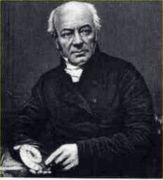In 1831, Charles Darwin was visiting Maer Hall, home of his uncle Josiah Wedgwood II, whom he told of his father, Robert Darwin's, opposition to him joining a two-year voyage on H.M.S. Beagle. Charles was enthusiastic about the opportunity, but his father objected to it as a waste of time, delaying his expected career in the clergy, and would not give his permission. His father said, however, he could be swayed to change his opinion if Charles found a man with common sense who would regard the proposed trip as being worthwhile.
Charles found that man in his uncle Josiah, who wrote a letter answering all of the objections in his favour. Josiah was Robert's brother-in-law, and as a family member was successful in influencing him to change his mind. From Today In Science History
Wednesday, August 31, 2011
On This Day: Charles Darwin Finds His Advocate For Sailing On The Beagle
Monday, August 29, 2011
Died This Day: Julie Ege
Julie had the lead role as Nala in the 1971 Hammer film, “Creatures The World Forgot”.
Saturday, August 27, 2011
Wednesday, August 17, 2011
Premiered This Day: The People That Time Forgot
Directed by Kevin O’Connor, this 1977 film starring Doug McClure was a sequel to “The Land That Time Forgot” (1975).
Monday, August 15, 2011
Rapid Recycling of The Earth's Crust
A young source for the Hawaiian plume. 2011. A. V. Sobolev, et al. Nature, Published online Aug. 10.
Some ocean islands, such as Hawaii, originate from the lowest part of the mantle as hot rock rises in cylindrical columns (mantle plumes), from a depth of nearly 3000 kilometres. Near the surface, it melts, because the pressure is reduced, and forms volcanoes. The plume originates from former ocean crust which early in the Earth's history sank to the bottom of the mantle. Previously, scientists had assumed that this recycling took about two billion years.
The chemical analysis of tiny glassy inclusions in olivine crystals from basaltic lava on Mauna Loa volcano in Hawaii has now surprised geologists: the entire recycling process requires at most half a billion years, four times faster than previously thought. link
The recycling of the Earth's crust in volcanoes happens much faster than scientists have previously assumed.Rock of the oceanic crust, which sinks deep into the earth due to the movement of tectonic plates, reemerges through volcanic eruptions after around 500 million years. Previously, geologists thought this process would take about two billion years.
Some ocean islands, such as Hawaii, originate from the lowest part of the mantle as hot rock rises in cylindrical columns (mantle plumes), from a depth of nearly 3000 kilometres. Near the surface, it melts, because the pressure is reduced, and forms volcanoes. The plume originates from former ocean crust which early in the Earth's history sank to the bottom of the mantle. Previously, scientists had assumed that this recycling took about two billion years.
The chemical analysis of tiny glassy inclusions in olivine crystals from basaltic lava on Mauna Loa volcano in Hawaii has now surprised geologists: the entire recycling process requires at most half a billion years, four times faster than previously thought. link
Died This Day: William Buckland
From The Victorian Web:
Buckland (March 12, 1784 – August 15, 1856) was the first man to identify and name a dinosaur (Megalosaurus), although the name dinosaur had not yet been coined by Richard Owen. Partly in response to the controversial works of Cuvier, Buckland wrote Reliquiae Diluvianae (1823) in which he argued that the evidence of geology alone demonstrated that a great flood had covered the entire globe. This move helped to make geology look more respectable in a religiously conservative England and perhaps to advance Buckland's own career at Oxford by making geology appear to be a respectable companion to the classics.
great flood had covered the entire globe. This move helped to make geology look more respectable in a religiously conservative England and perhaps to advance Buckland's own career at Oxford by making geology appear to be a respectable companion to the classics.
Buckland was a bit of an eccentric, given to outlandish dress and behavior. Although Buckland was immensely influential as a scientist, his rakish reputation gave many of his staid early Victorian contemporaries considerable difficulty in accepting his work.
More info from HERE. Image from HERE
Buckland (March 12, 1784 – August 15, 1856) was the first man to identify and name a dinosaur (Megalosaurus), although the name dinosaur had not yet been coined by Richard Owen. Partly in response to the controversial works of Cuvier, Buckland wrote Reliquiae Diluvianae (1823) in which he argued that the evidence of geology alone demonstrated that a
 great flood had covered the entire globe. This move helped to make geology look more respectable in a religiously conservative England and perhaps to advance Buckland's own career at Oxford by making geology appear to be a respectable companion to the classics.
great flood had covered the entire globe. This move helped to make geology look more respectable in a religiously conservative England and perhaps to advance Buckland's own career at Oxford by making geology appear to be a respectable companion to the classics.
Buckland was a bit of an eccentric, given to outlandish dress and behavior. Although Buckland was immensely influential as a scientist, his rakish reputation gave many of his staid early Victorian contemporaries considerable difficulty in accepting his work.
More info from HERE. Image from HERE
Sunday, August 14, 2011
Subscribe to:
Comments (Atom)









